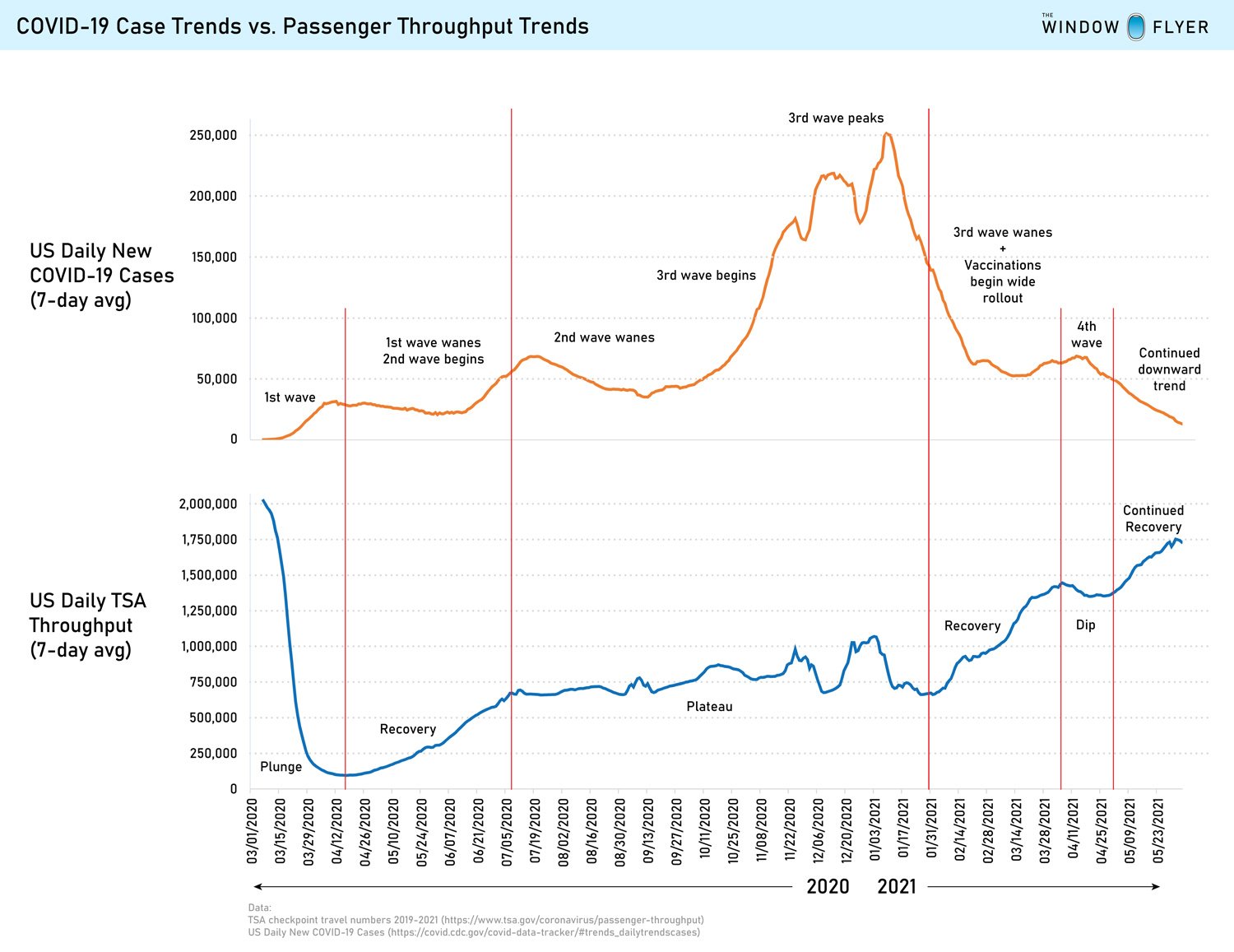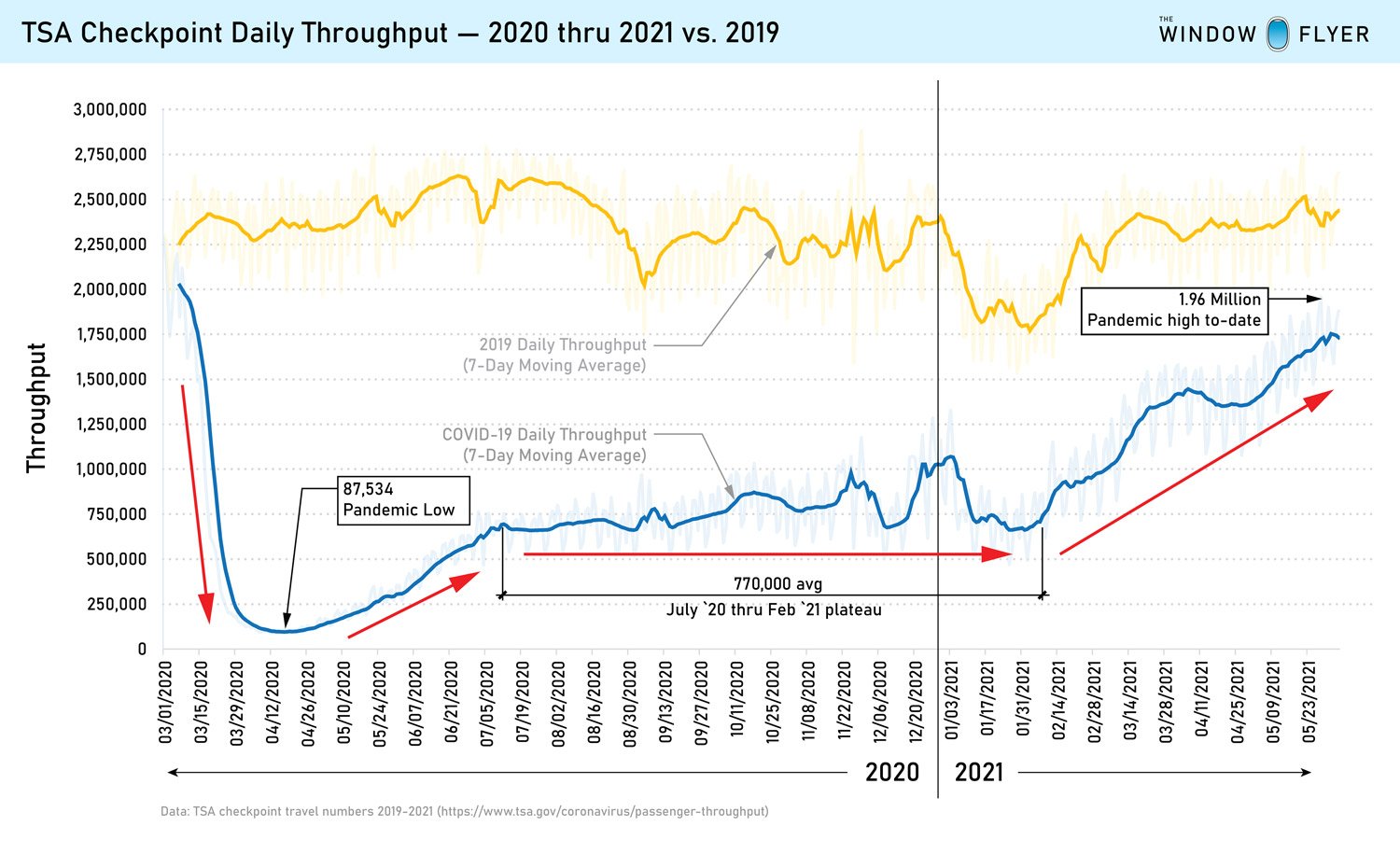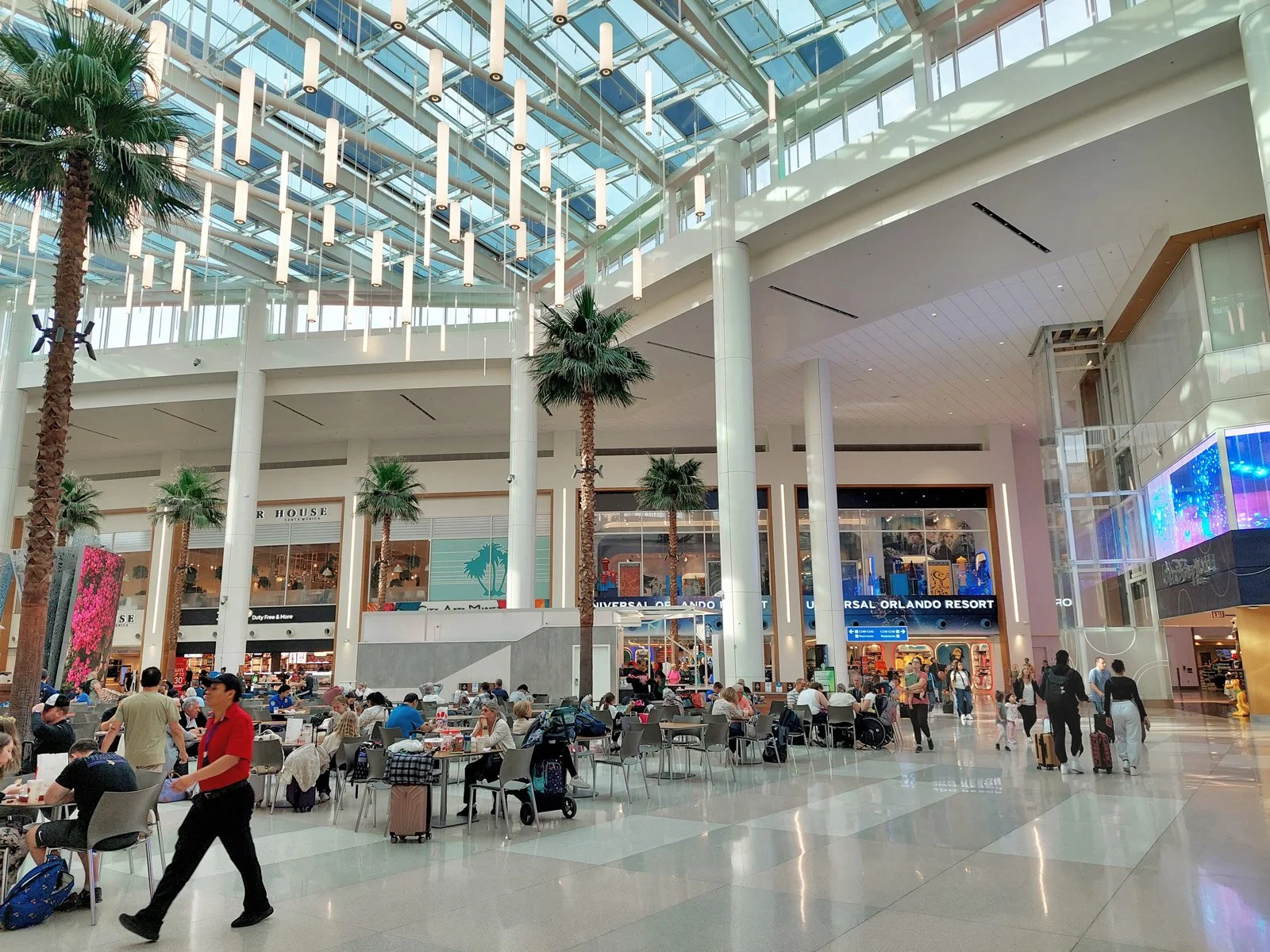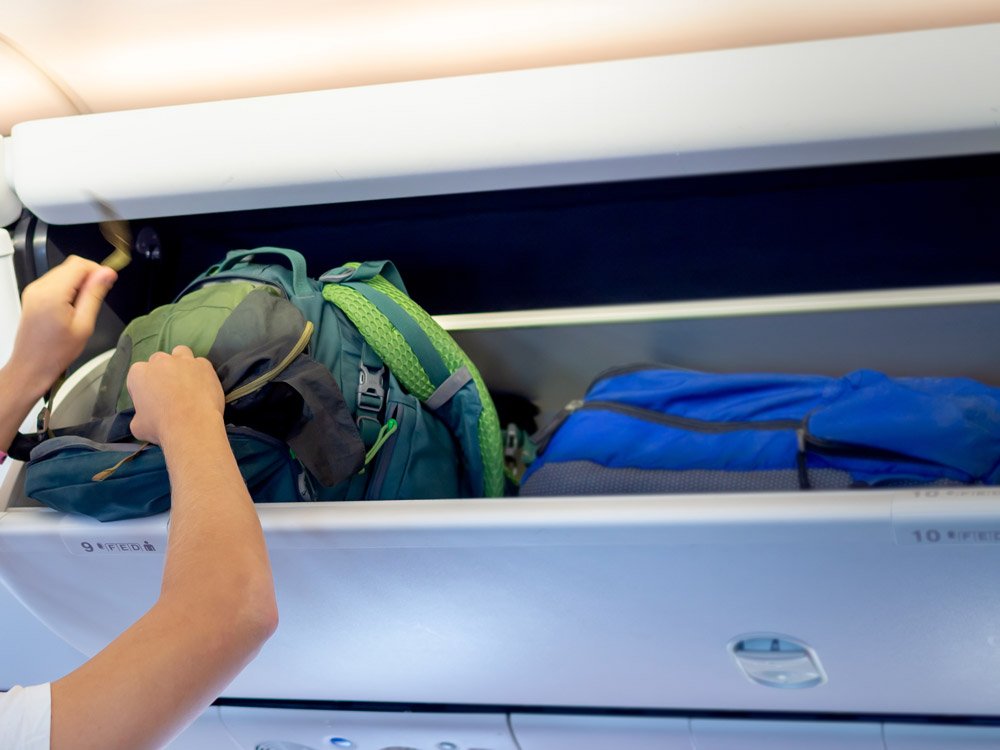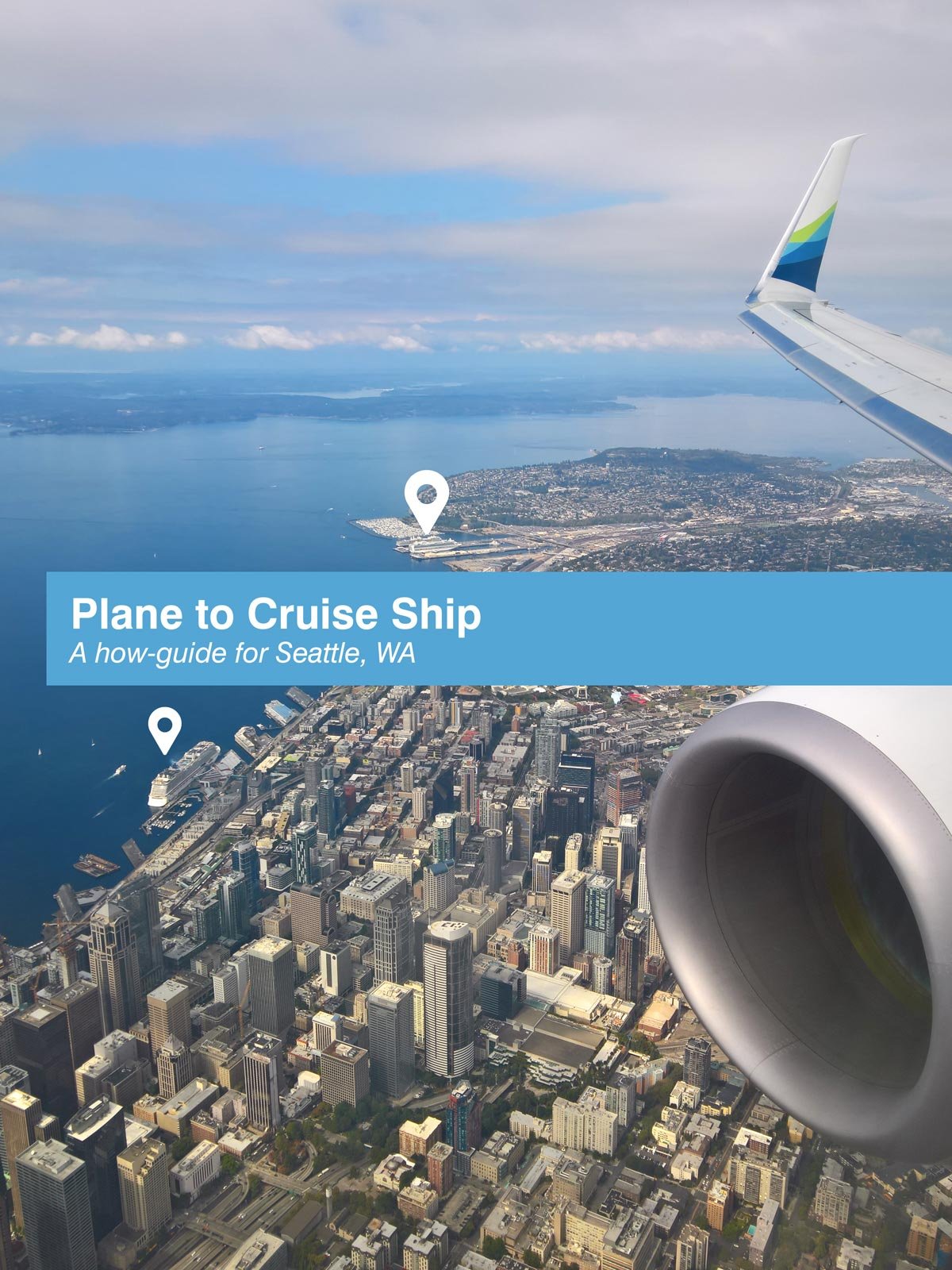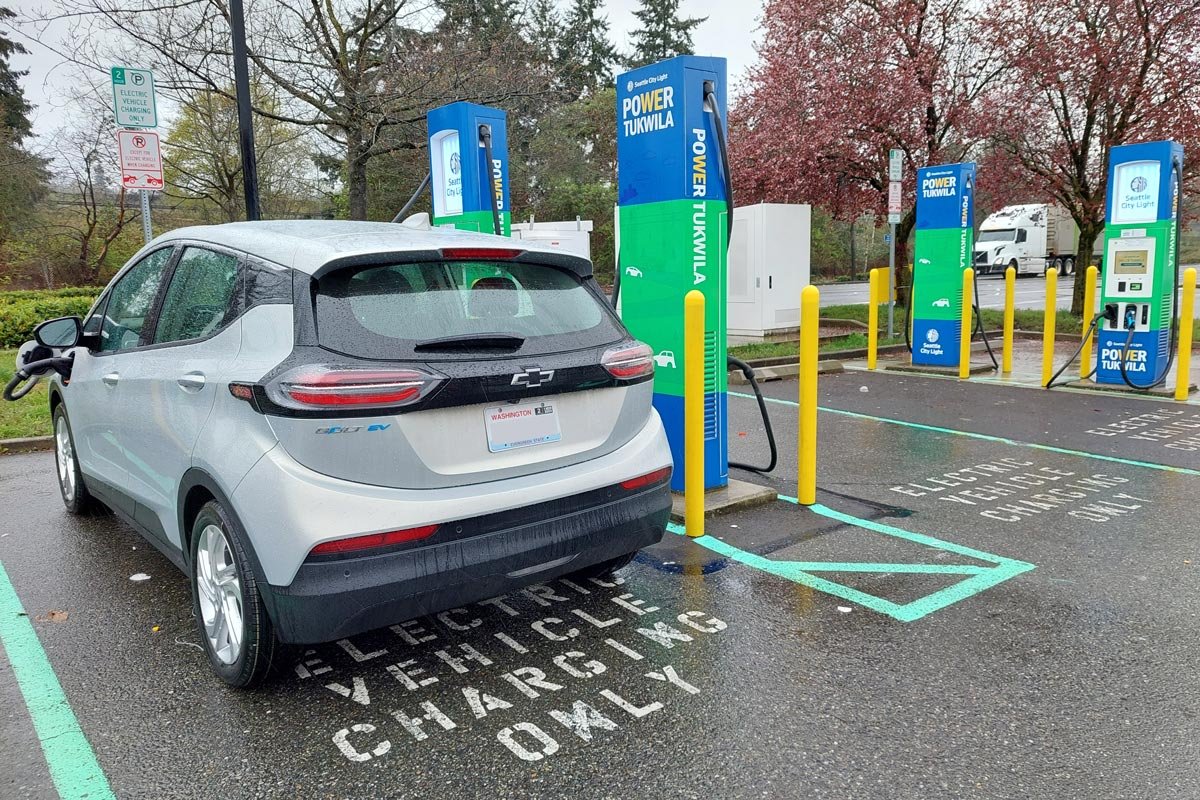Passenger air travel demand trends through COVID-19
Drops and recovery of air travel demand throughout the COVID-19 pandemic closely mirrored, inversely, the trend of daily new COVID case counts in the US (click to enlarge).
Image: The Window Flyer
Covid Recovery Charts (Click to Enlarge)
COVID Recovery COntinues
If you’ve flown in 2021 and feel like planes and airports have been getting fuller lately, your eyes and mind aren’t playing tricks on you. As Americans continue to be vaccinated against SARS-CoV-2, the virus that causes COVID-19, they are beginning to fly en masse again. The numbers bode well for the airline industry, which was severely impacted by the pandemic and is now showing strong signs of recovery as the pandemic wanes.
Just exactly how many people are flying these days? On Friday, May 28, 2021, heading into Memorial Day weekend, TSA checkpoints across the United States screened 1,959,593 passengers, just shy of the 2 million passenger mark. To-date, this is a record-high number during the COVID-19 pandemic.
Looking at another metric, in recent weeks TSA passenger throughput indicates airline travel demand has been averaging between 70% and 75% of their pre-COVID levels. This is in stark contrast to the all-time pandemic low of 4%, when just 87,534 people took to the skies in the United States on April 14, 2020.
As the pandemic hopefully winds down for good this time, we take a closer look and analysis of how airline passenger demand ebbed and flowed throughout the course of the COVID-19.
All data presented here is sourced from official TSA passenger throughput numbers and official Centers for Disease Control (CDC) data for daily COVID case counts. Comparing the passenger count data against the COVID case count data, there is a pretty clear trend that has emerged, showing the elasticity of air travel demand and effects of COVID cases on consumer behavior.
Perhaps unsurprisingly, the trajectory of passenger demand for airline travel in the United States has largely displayed an inverse relationship to the number of COVID cases in the US. When cases go up, air travel goes down, and vice versa. This correlation can be observed across all four waves of COVID-19 cases in the US over the past 15 months.
ADVERTISEMENTAirline Passenger Demand throughout COVID-19
1st COVID wave: Initial drop and recovery
We all know the story. In March 2020, everything shut down, including air travel. Demand plunged from 100% to 4% in a matter of three to four weeks.
When local economies began their first round of reopening last spring as the initial COVID wave began to subside, passenger throughput at TSA checkpoints grew at a pretty linear pace. Traffic rebounded at about 10% per month, reaching about 25% of pre-pandemic levels before leveling off in late June 2020.
It was around this time it became crystal clear the country was in the middle of a 2nd wave of COVID.
2nd and 3rd COVID waves: Stalled recovery
As the 2nd wave continued, passenger traffic plateaued, and for the most part remained flat thru February 2021 through the even larger and dreaded 3rd wave last fall and winter. Yes, there were a few small peaks in passenger traffic at the end of August, September, November, and December, coinciding with Labor Day, the lull between the 2nd and 3rd COVID waves, Thanksgiving, and Christmas/New Year’s holidays respectively. However, over the course of these 8 months, throughput numbers averaged around 770,000 passengers screened per day, or just 34% of normal levels.
It is worth noting that the slight upward trajectory between July 2020 and February 2021 observed in the traffic as-a-percentage-of 2019 passenger levels chart is a bit deceiving. This is because passenger traffic historically drops off at a gradual pace each year after the summer peak. So while pure passenger counts remained relatively flat during this time period, the percentage metric increased simply due to naturally lower traffic quantity in the late summer, fall, and winter months.
ADVERTISEMENT3rd COVID wave wanes, mass vaccinations begin, and a small 4th wave: A clear recovery trajectory
Late January/Early February 2021 saw the tide begin to turn in the battle against COVID. The 3rd wave was waning rapidly, and vaccine eligibility began to expand to more and more Americans nationwide.
The plateau over the past 8 months began to turn into a recovery. By mid-to-late March, passenger traffic began to routinely break through the 50%-60%+ threshold compared to pre-pandemic levels.
There was a slight dip in passenger traffic toward the end of April, perhaps as a reaction to the small 4th wave of COVID that was encountered in a number of communities across the United States. However, since then, passenger numbers have been in a solid upward trend as new daily COVID cases continue to drop and more and more Americans get vaccinated.
The month of May saw the 7-day rolling average of passenger numbers break through the 1.5 million mark for the first time since the pandemic began, continuing on a trajectory toward 2 million. The percentage metric also improved from 60% to about 75%, even during a time where passenger traffic historically begins to ramp up for the busy summer travel season.
The summer outlook
It remains to be seen if the airline industry recovery will continue its current linear trajectory, or even begin to pick up pace, as states begin to fully reopen, vaccinations continue, and we reach the height of the summer travel season. All signs point to a continued recovery for the whole travel sector, not just airlines; the impending restart of the cruise industry is just one example.
However, the wildcard of business travel remains. Will virtual Zoom meetings remain a fixture in the workplace, permanently reducing business travel demand? Or will companies get back to face-to-face collaboration and send workers up in the skies, operating just like before?
Other Indicators of Recovery
In recent weeks, there have also been a few other indicators of a recovering airline industry and decreasing COVID-19 risk:
Airlines are beginning to offer hot meals on board again
Airlines are no longer blocking middle seats
Alaska Airlines has announced a timeline for a full restart of their service out of Everett/Paine Field (PAE), which was entirely suspended last year due to low travel demand.
ADVERTISEMENTMasks on planes still mandatory
As a reminder, while the CDC has announced that fully vaccinated people no longer need to wear masks in most settings, the aviation system is not one of those settings yet. So if you’re planning to hop on a plane this summer for a weekend getaway or family vacation, know that masks and facial coverings must continue to be worn at all US airports and on airplanes through at least September 13, 2021.
Read more: Do I still have to wear a mask on a plane if fully vaccinated?
Conclusion
Air travel and the airline industry have been through a lot over the past year, and it’s certainly been a long road to recovery for the sector as a result of the COVID-19 pandemic. Service changes, such as suspension of routes, reduced schedules, reduced in-flight beverage and meal options have also been a challenge for passengers who have flown during the pandemic.
However, all signs currently point to an impending “return to normal” in the skies in the coming months as Americans take to the skies again and plan their vacations. With COVID cases continuing to drop, vaccinations continuing, and states fully reopening, there’s no reason to think that air travel demand won’t continue to improve and mirror the demand trends we’ve seen throughout the course of the pandemic so far.
We hope you’ve found this article and data analysis interesting – please be sure to share and pass it along to others who might be interested!
ADVERTISEMENTRelated Content

